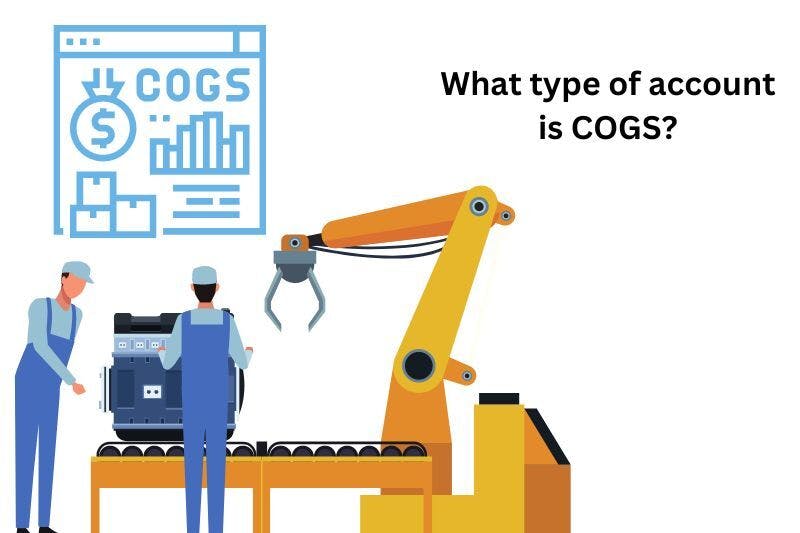
Is there some confusion going on around this matter? Well, unless you’re an accountant you’re well within your rights to be confused. However, let’s get it sorted out because as a small business owner you can’t afford not to know your debits from your credits, your left from your rights. Let’s move speedily forward by clearing up this matter.
What is the cost of goods sold (COGS)?
Before we head down this road together, let’s be sure we’re all on the same path. Cost of goods sold represents the direct costs incurred during the production of the goods sold by the company. This will include the cost of materials and labor directly involved in the production of the goods. What it doesn’t include are distribution costs and the cost of selling the product (e.g. sales teams).
To illustrate.
SOLARBREEZE is a company that manufactures and sells solar-powered fans. These fans cool machinery in production plants without using energy from the grid, and they are particularly popular in environmentally friendly markets.
Cost of Goods sold for the company would include:
Material costs: These are the costs associated with raw materials such as solar panels, batteries, plastic and metal components, and electronic circuitry.
Direct labor costs: Wages paid to workers that are involved in the manufacture of the fans. This would not include the salary of the sales staff, delivery staff and management because they are not directly involved in manufacturing the product. They are called indirect costs.
Manufacturing overheads: These are costs tied to the manufacturing process but not directly tied to individual units, such as depreciation on manufacturing equipment, rent for factory space, and electricity for the machinery. They are called overhead costs.

If COGS and other accounting items are giving you a headache, Hall Accounting Company offers business services to SBOs that include bookkeeping and taxation. Give us a call today.
How to handle COGS in the general ledger
Sticking with our example above, the accounts used to manage the transactions for SolarBreeze would be:
Inventory Account
Purchase Accounts
Cost of Goods Sold Account
Recording the debits and credits
Recording transactions requires you to make what is called a journal entry. This way of entering debits and credits for one transaction is from an accounting principle known as the double entry accounting system and it is the acceptable method for dealing with financial transactions. Let’s plainly answer the question that was posed at the start of this article below.
Inventory account
The beginning inventory balance is found in this account, which is the balance carried over from the previous period. This represents the value of the goods available for sale at the start of an accounting period.
Purchase of raw materials
DEBIT the inventory account because it increases the balance of the stock available for sale.
CREDIT Accounts Payable Account or Cash Account because it decreases the amount available to purchase raw materials.
Ending inventory account balance
This is not an entry as such but reflects the closing balance of available inventory at the end of an accounting period.
Goods Sold journal entry
DEBIT Cost of Goods Sold Account because it increases the expense that reflects inventory costs.
CREDIT Inventory Accounts as this decreases the amount of goods available for sale.
Let’s put some numbers to our SolarBreeze example:
Let’s assume in a given quarter:
Opening inventory: $100,000
Purchases (additional raw materials, etc.): $250,000
Closing inventory: $150,000
Using the COGS formula:
COGS=Opening Inventory+Purchases−Closing Inventory
COGS=$100,000+$250,000−$150,000=$200,000
Which type of account is the Cost of Goods Sold?

COGS is an EXPENSE account. Why is this? It reduces the value of inventory (an asset account) and is deducted from revenue to arrive at gross profit on the income statement. It does not represent an asset or a liability.
Why is COGS not an asset or liability?
Not an Asset: It does not represent a resource controlled by the company expected to provide future economic benefits, which is the defining characteristic of an asset.
Not a Liability: There is not an obligation to transfer resources to another entity, which defines a liability.
Placement of COGS in financial statements
COGS only appears in the income statement and not in the balance sheet. The income statement layout typically follows this pattern:
Revenue
Cost of Goods Sold
Gross Profit
Operating Expenses
Net Income
For instance, if our fictitious company, SolarBreeze earns $1,000,000 in revenue and has $600,000 in COGS, the gross profit would be:
Gross Profit=Revenue−COGS=$1,000,000−$600,000=$400,000
What can be learned from COGS?
There are a number of lessons we can learn from this amount in the income statement. We feel that there is no value in generating numbers if you don’t know what you’re looking at, so we want to show you how this can work for you.
What you can learn about operational efficiency?
A lower COGS relative to sales revenue indicates that the company is managing their production costs effectively. However, a higher COGS than sales revenue indicates problems with the cost of raw materials, labor costs or overheads that need to be addressed.
What you can learn about inventory management?
The analysis of trends in COGS can highlight issues such as overstocking, understocking, or products that are obsolete. Variations can also be an indication of external pressures, such as increased raw material costs or changes in labor costs.
The value of outsourcing your bookkeeping
As we close our discussion on COGS, let’s reflect on the role that it plays. It’s not just a measure of costs associated with the production of your product but it also provides value in shaping your inventory management process, and can tell you a lot about your pricing strategy and profitability.
For small business owners like yourselves, mastering the application of COGS is important, empowering you to run your business efficiently. Through our illustration of SolarBreeze, we’ve been able to show you how COGS works in the general ledger and where it appears in the income statement.
If all you wanted was a simple answer to your question: “Is cost of goods sold a debit or credit?” then we’ve come to the end of our discussion. But before you go, you might like to consider what it would mean to your business if you could outsource your bookkeeping to our accounting firm, Hall Accounting Company.
By making use of our business services, you can ensure that your monthly bookkeeping is done accurately and on time, which will give you the kind of information you’re looking for at your fingertips. You won’t have to stress about debits and credits - although this information is always useful - you can carry on with the core activities of your business while we work on the financial transactions and then advise you on where you can make changes and improvements.
If you agree, we invite you to schedule a consultation to discuss your accounting needs with us. At this initial meeting, we can discuss your goals and expectations and then we’ll come up with some recommendations on where we can get the quickest gains for your business. If you believe we’re not a match after the initial meeting - no hard feelings.